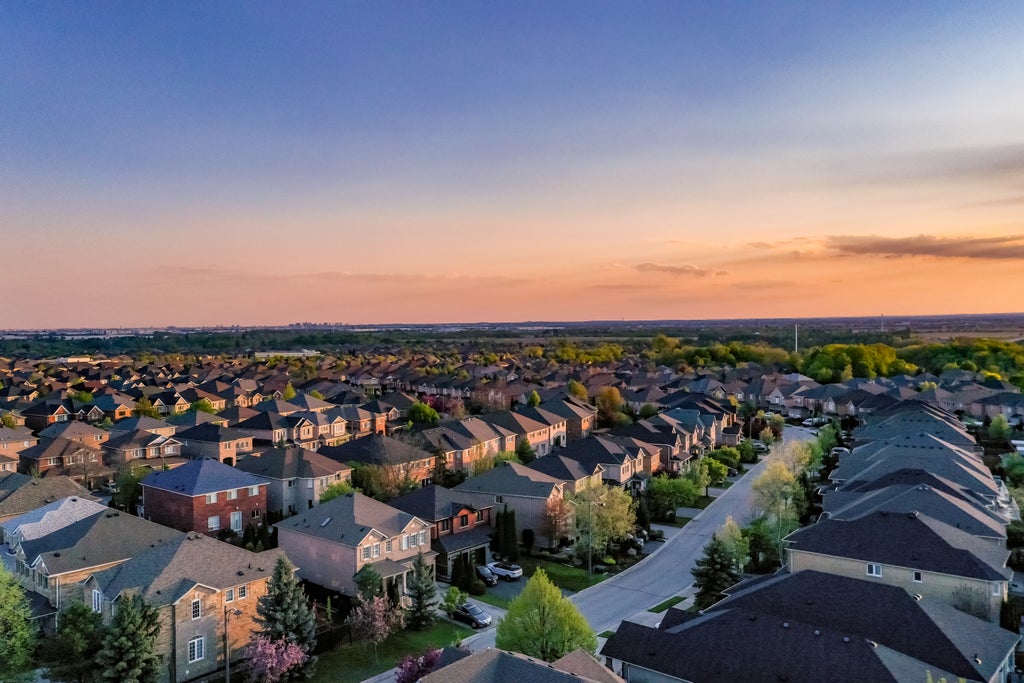Overview
Home prices are flat across the U.S. However, certain areas of the country, such as the Northeast, are posting prices well above the national average. Cotality’s Chief Economist Selma Hepp expects further price deceleration in 2025, although recent improvements in mortgage rates may spur homebuying this spring.
- National home price growth tracked just above inflation at 3.3% for the period between January 2024 – January 2025. Monthly home price growth is flat.
- Florida and Arizona are home to the housing markets with the highest risk of price decline.
- CoreLogic analysis suggests that Florida markets are continuing to fall out of favor while western New York is gaining popularity.
National home price growth
January 2025 data
Source: Cotality
Affordability meter
Source: Cotality
Insights from Chief Economist Selma Hepp
Home price growth remains largely flat in the U.S. as we come out of winter. Although prices are expected to eek out gains in the coming year, there are stark differences between regions.
The Northeast continues to buck overall national trends, remaining unbothered by slower job growth, elevated interest rates, and ongoing affordability concerns.
Meanwhile, in the Mountain West, prices are the furthest from their record highs. In Hawaii, prices declined by 4.4%.
Despite this, national single-family home prices are forecast to reach a new peak in March 2025. Currently, the median sales price for all single-family homes in the U.S. is $375,000.
Top 10 hottest markets
Source: Cotality
Top 10 coolest markets
Source: Cotality
Which areas are affordable?
Tracking the top 5 highest and lowest U.S. median sales prices
Source: Cotality
Markets to watch
Tracking markets with a very high risk of price decline
Source: Cotality
High-risk market home price trends
Source: Cotality


Methodology
The CoreLogic HPI™ is built on industry-leading public record, servicing and securities real-estate databases and incorporates more than 40 years of repeat-sales transactions for analyzing home price trends. Generally released on the first Tuesday of each month with an average five-week lag, the CoreLogic HPI is designed to provide an early indication of home price trends by market segment and for the “Single-Family Combined” tier, representing the most comprehensive set of properties, including all sales for single-family attached and single-family detached properties. The indices are fully revised with each release and employ techniques to signal turning points sooner. The CoreLogic HPI provides measures for multiple market segments, referred to as tiers, based on property type, price, time between sales, loan type (conforming vs. non-conforming) and distressed sales. Broad national coverage is available from the national level down to ZIP Code, including non-disclosure states.
CoreLogic HPI Forecasts™ are based on a two-stage, error-correction econometric model that combines the equilibrium home price—as a function of real disposable income per capita—with short-run fluctuations caused by market momentum, mean-reversion, and exogenous economic shocks like changes in the unemployment rate. With a 30-year forecast horizon, CoreLogic HPI Forecasts project CoreLogic HPI levels for two tiers — “Single-Family Combined” (both attached and detached) and “Single-Family Combined Excluding Distressed Sales.” As a companion to the CoreLogic HPI Forecasts, Stress-Testing Scenarios align with Comprehensive Capital Analysis and Review (CCAR) national scenarios to project five years of home prices under baseline, adverse and severely adverse scenarios at state, metropolitan areas and ZIP Code levels. The forecast accuracy represents a 95% statistical confidence interval with a +/- 2% margin of error for the index.
About Market Risk Indicator
Market Risk Indicators are a subscription-based analytics solution that provide monthly updates on the overall “health” of housing markets across the country. CoreLogic data scientists combine world-class analytics with detailed economic and housing data to help determine the likelihood of a housing bubble burst in 392 major metros and all 50 states. Market Risk Indicators is a multi-phase regression model that provides a probability score (from 1 to 100) on the likelihood of two scenarios per metro: a >10% price reduction and a ≤ 10% price reduction. The higher the score, the higher the risk of a price reduction.











